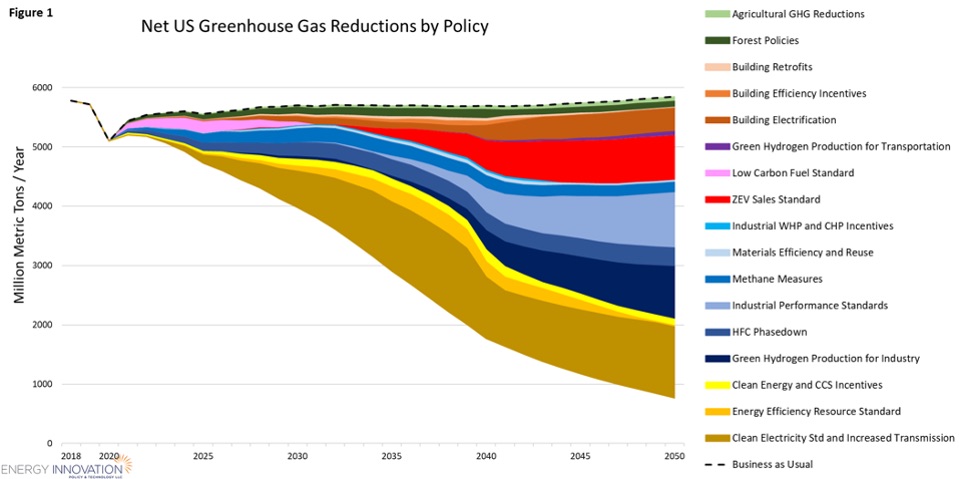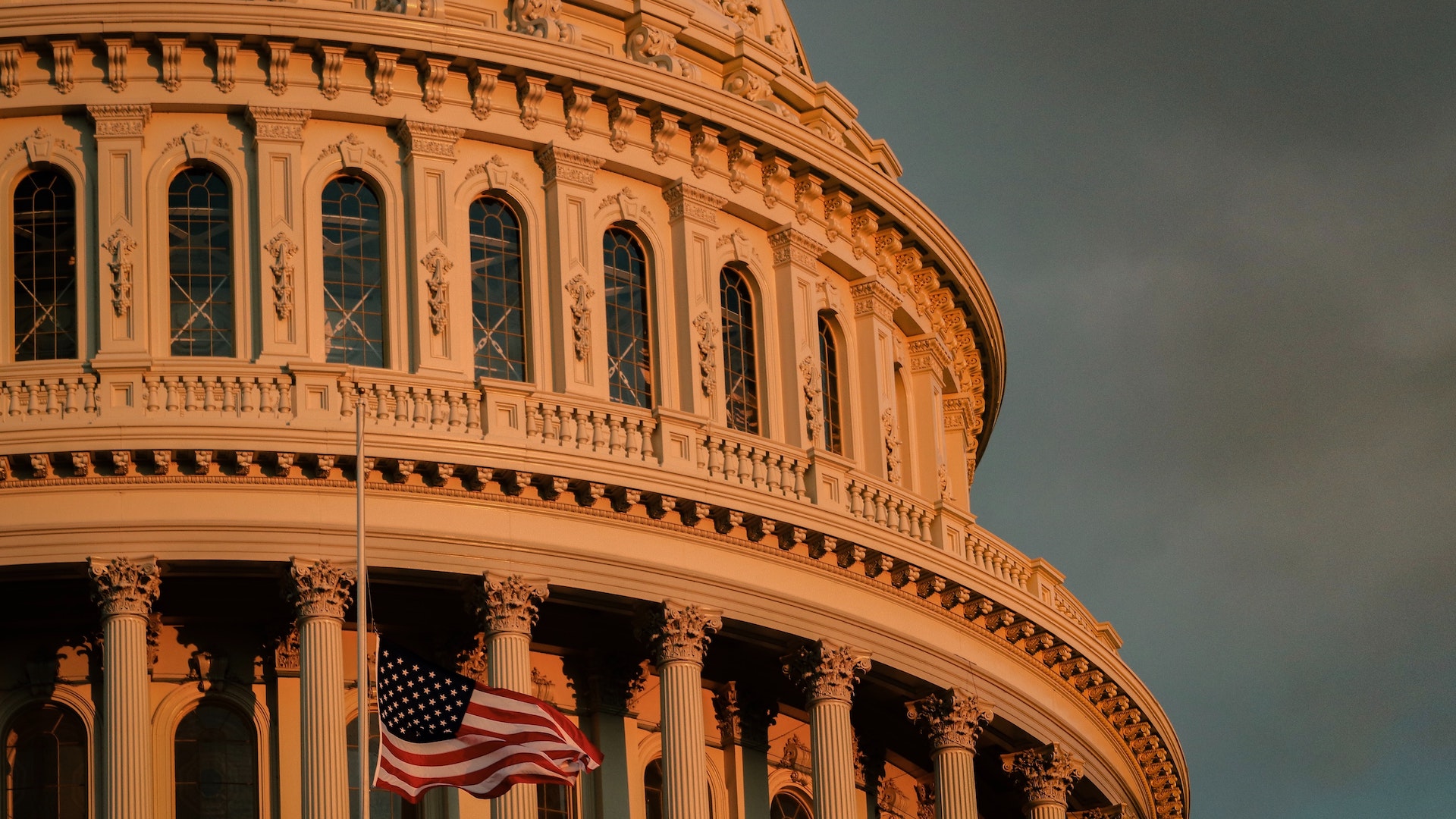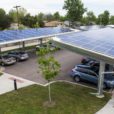On Tuesday, June 30th, Democrats on the House Select Committee on the Climate Crisis, a committee charged with delivering climate policy recommendations to Congress, introduced the Congressional Action Plan for a Clean Energy Economy and a Healthy and Just America, also known as the Climate Crisis Action Plan. The Plan provides comprehensive proposals in order to transition the U.S. from fossil-fuel reliance to a clean economy. It will likely be the backbone of the Democratic Party’s climate policy if Democrats are able to regain control in Washington this November.
Throughout its 538 pages, the report outlines a plan to reach the target of net-zero economy-wide emissions by 2050, in line with international goals set by the Intergovernmental Panel on Climate Change to limit a global temperature rise of more than 1.5 degrees Celsius, and some of the worst climate impacts that would come with it. It also sets clear interim targets, reducing net heat-trapping gas emissions 37% below 2010 levels by 2030.
In transitioning the country to net-zero emissions, the non-partisan think tank Energy Innovation found that the Climate Crisis Action Plan would save 62,000 lives every year until 2050, and would provide $8 trillion in climate and health benefits in that timeframe. These benefits show that transitioning to a cleaner economy is not only necessary to limit the devastation of global warming, but also has massive co-benefits that will improve overall quality of life in this country.
Most importantly, the Climate Crisis Action Plan rightly focuses many of its initiatives on environmental justice communities, and places an emphasis on reducing emissions in areas that have been heavily impacted by toxic emissions, natural disasters, and other climate impacts. In the report’s first paragraph, it cites the recent protests over structural racism in the U.S., specifically mentioning the killing of George Floyd, and quickly makes the connection that the same Black communities most at risk to police brutality are also those at higher risk to environmental hazards.
Select committee Democrats seem to view this plan as an opportunity not only to reduce emissions and reach the important net-zero by 2050 target, but also as a chance to take accountability for past failures in governmental policies, which allowed for the emissions-intense economy that has caused the climate crisis, and perpetuated systemic racism and economic inequality.
How does the plan get us to net-zero?
To equitably reach the target of net-zero by 2050, the Plan outlines more than 120 legislative options to frame future Congressional action. The full set of policy proposal groupings are outlined in Figure 1, which display how each policy category has the potential to reduce emissions by 88% from 2010 levels in the next 30 years.

Some of the most important policies the report recommends include setting a Clean Energy Standard, which would ensure net-zero electric sector emissions by 2040, requiring all cars to produce zero emissions by 2035, and mandating that all heavy-duty trucks produce zero emissions by 2040.
The Plan calls to double the funding for public transportation across the country; sponsor massive investments in wind, solar, and other renewable energy sources; incentivize domestic manufacturing of clean technologies and healthy agricultural practices; and eliminate methane emissions from pipelines and exemptions from oil and gas industries to comply with current regulations under the Clean Water and Clean Air Act.
What about carbon pollution pricing?
The Climate Crisis Action Plan also incorporates a carbon pricing strategy, emphasizing the need to make polluters pay for the damages their emissions cause. Although the Plan does not recommend the exact design of the policy, it does frame carbon pricing in a very different manner than Congressional carbon pricing has been painted in the past.
The report views a carbon price as “only one tool to complement a suite of policies to achieve deep pollution reductions and strengthen community resilience,” stating very clearly that “Carbon pricing is not a silver bullet.” In this context, carbon pricing is not a stand alone policy; while it is an important component to reach net-zero emissions, it only works when accompanied with a variety of other necessary strategies.
The select committee’s Plan also directs Congress to “ensure low- and moderate-income households benefit from a national carbon price,” and instructs revenue from the pricing mechanism to be reinvested specifically in “low-income communities, communities of color, and communities and workers in economic transition.” With this framing, a carbon price would not only correct the current market failure that does not account for the cost of emissions, but would also work to correct economic injustices and redistribute revenue away from large polluting industries and towards communities that historically have been prevented from accumulating wealth, and underserved by public services.
Beyond a net-zero target: building American resilience
On top of these policy goals, the report also includes recommendations for provisions to build resilience in communities across the country to prepare for climate-related impacts. Even if we reach the 2050 target of net-zero emissions, climate impacts will not disappear overnight, and we still have to ready our communities for the inevitable damages and harm that are already affecting many U.S. citizens and communities today.
The Climate Crisis Action Plan calls for the launch of a National Climate Adaptation Program to ensure that critical infrastructure can withstand climate-related threats. It also aims to develop a national strategic plan to help communities prepare for and respond to environmental threats, with a focus on low-income communities that are particularly vulnerable to worsening natural disasters. It also embraces plans to improve building codes and efficiency.
Key to building resilience to climate effects, the report includes a focus on preparing for the national security threats that come with a changing climate. These include disaster response management, border security, and disease outbreak preparation provisions, among many others. Ultimately, the Plan recommends Congress direct both the Department of Homeland Security (DHS) as well as the Federal Emergency Management Agency (FEMA) to better prepare for climate-related security threats.
Political dynamics
Although this report will not likely move this year with a Republican-controlled Senate and White House, it presents people across the country with a view of what America could look like if more Democrats are voted into office this November. In this historical moment, where concern over climate change is on the rise in Democrat and Republican constituencies alike, this is of increasing importance in an election year.
The release of this report also comes on the heels of momentum for the more ambitious Green New Deal, introduced by Representative Alexandria Ocasio-Cortez (NY) and Senator Ed Markey (MA) last year, which similarly called for net-zero emissions by 2050, but through a more aggressive approach that would source 100% of the United States’ power demand from renewable sources by 2030 and would ban fracking.
While the Climate Crisis Action Plan is heavily based in Green New Deal ideas, authors of the House report hoped to appease both the more progressive wing of the Democratic party that has prioritized climate justice, as well as the growing concern for climate change in moderate Democrats and Republicans, by working to find middle ground.
“To the young people who have urged us to act fearlessly, we have heard you,” said U.S. Rep. Kathy Castor (D-Fla.), chair of the House Select Committee on the Climate Crisis, who spearheaded the writing of the report. Although some left-leaning climate groups have criticized the Climate Crisis Action Plan for failing to move the needle far enough, the report did receive positive feedback from the Sunrise Movement, a youth-led coalition of climate activists (though they also stressed that the report could’ve been more ambitious).
On the other hand, Republicans have voiced concern about the Plan, falsely attempting to paint the narrative that protecting the climate is a sacrifice for the economy. In fact, however, Climate XChange’s most recent report found that every million dollars invested in fossil fuels creates 4.3 jobs, while the same investment produces 10 jobs in sustainable industry. This false narrative derives from the fact that many Republican legislators rely on fossil fuel money to support their campaigns.
Considering the immense power the fossil fuel industry has over the Republican party, the fact that many GOP-members are starting to turn towards climate solutions is a testament to the progress the climate movement has recently made. Just this year, House minority leader Kevin McCarthy (CA) began building a coalition of Republicans in support of some climate policies, including the development of carbon capture technologies.
Committed to climate
Above all, the release of the Climate Crisis Action Plan displays the growing focus on environmental policy in the political arena, as well as the recent shift in the Democratic party to prioritize climate justice and be more ambitious on climate change.
“It will be a fight as long as it needs to be,” said Speaker of the House Nancy Pelosi on the day of the plan’s release. “We will turn this report into law, saving the planet. Democrats know that the climate crisis is the essential crisis of our time.”
Through the turmoil of the COVID-19 pandemic and the outpour of protests against structural racist injustice, lawmakers have been able to make the connection to the climate crisis, which both increases the likelihood of epidemics and disease outbreaks, and also exacerbates racial injustice. The renewed commitment to solving climate change, and building our country back from its current economic crisis to be more sustainable and more equitable, is essential, and we must continue to push our policymakers to prioritize these issues.









